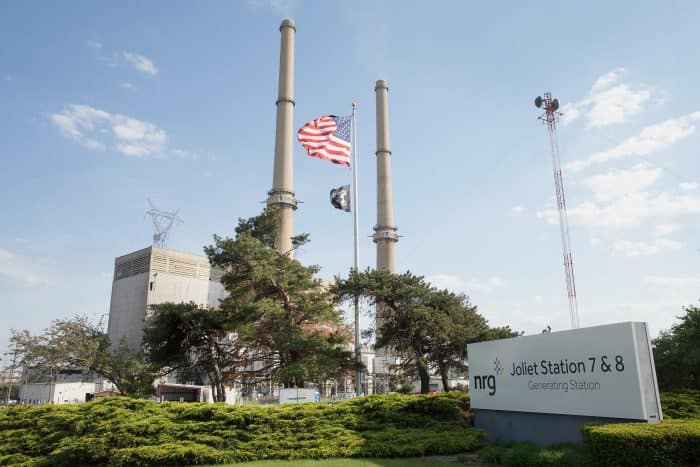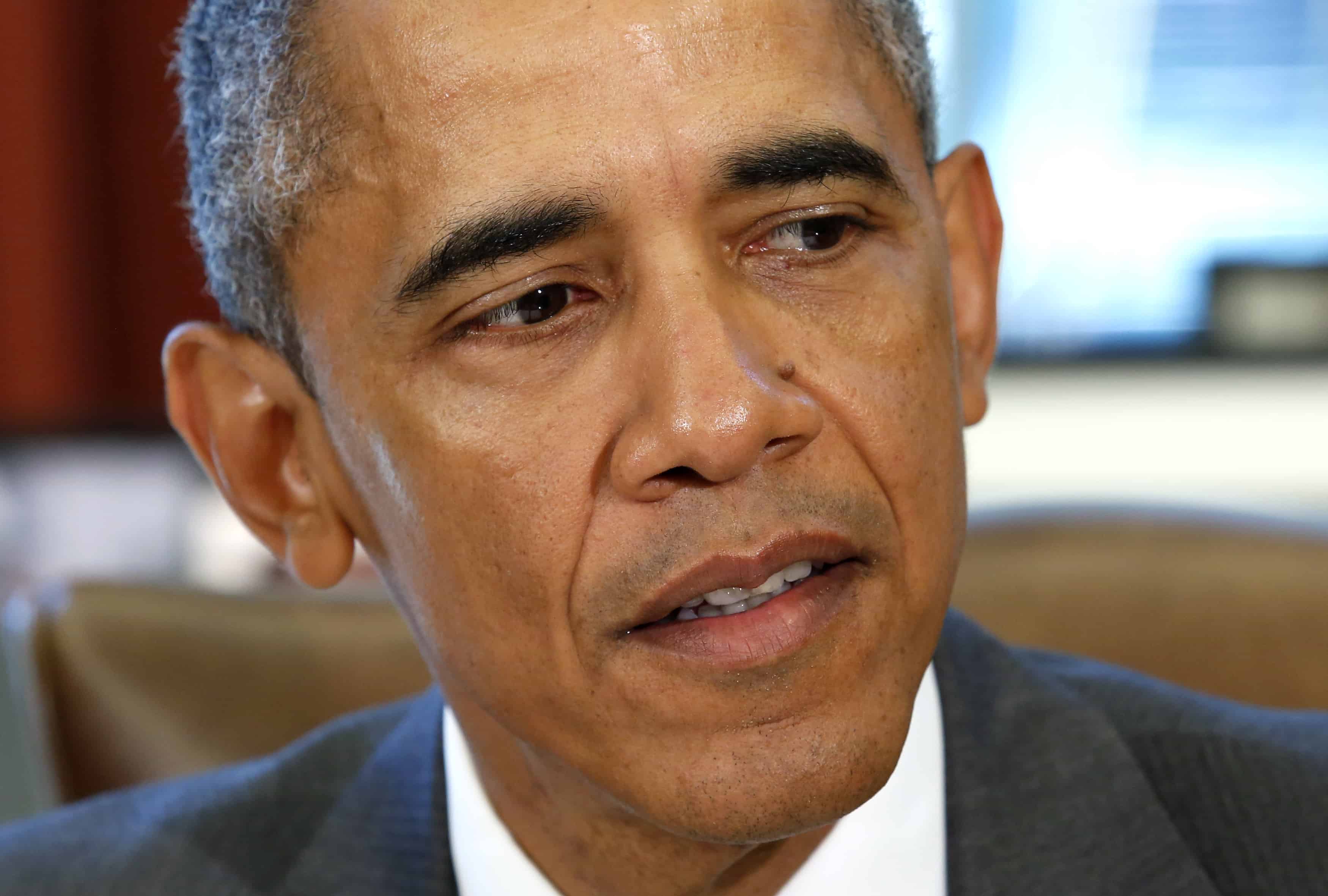WASHINGTON, D.C. — The Obama administration will formally adopt an ambitious regulation for cutting greenhouse-gas pollution on Monday, requiring every state to reduce emissions from coal-burning power plants and putting the country on a course that could change the way millions of people get their electricity.
A retooled version of the administration’s Clean Power Plan, first proposed a year ago, will seek to accelerate the shift to renewable energy while setting tougher goals for slashing carbon emissions blamed for global warming, according to administration officials briefed on the details.
The new plan sets a goal of cutting carbon pollution from power plants by 32 percent by the year 2030, compared with 2005 levels — a 9 percent jump from the previous target of 30 percent — while rewarding states and utility companies that move quickly to expand their investment in solar and wind power.
Many states will face tougher requirements for lowering greenhouse gas emissions under the revised plan. But state governments also will be given more time to meet their targets and considerably more flexibility in how they achieve their pollution-cutting goals, according to two senior officials knowledgeable about the rule. For the first time, the officials said, the plan also includes a “reliability safety valve” that can buy states additional time if needed to avoid disruptions in the power supply.
The rule — the first to regulate carbon emissions as a pollutant — is certain to face legal challenges as well as fierce opposition from the Republican-controlled Congress. Opponents blasted last year’s proposed regulation as a possibly illegal federal overreach that would impose costly burdens on utility companies and their customers.
All sides agree that the rule, if it stands, could substantially alter the U.S. energy landscape, driving the expanded use of “clean” energy while further diminishing coal’s long dominance as a source of power for homes and businesses. White House officials say U.S. residents will see major gains in improving air quality and fighting climate change as a result.
“This is the most significant action any U.S. president has taken to curb greenhouse gases,” said one of the officials, who spoke on the condition of anonymity because the revised plan had not yet been made public. “It will form the foundation of the country’s efforts to take on climate change for decades to come.”
The formal unveiling of the plan on Monday will kick off a major White House initiative on climate. The campaign starts with a series of policy addresses and includes a visit to the Alaskan Arctic by President Obama to call attention to the effects of global warming. In September, Obama will entertain Pope Francis, an equally ardent apostle for battling climate change. The effort is expected to culminate in December with talks on a proposed international treaty curbing global carbon emissions.
In a recorded video message to be released Sunday, Obama describes the Environmental Protection Agency’s plan to rein in coal-burning as “the biggest, most important step we’ve ever taken to combat climate change.”
“Power plants are the single biggest source of the harmful carbon pollution that contributes to the climate change,” Obama said, according to a transcript of the video provided to The Washington Post. “But until now, there have been no federal limits to the amount of that pollution those plants can dump into the air. Think about that.”
Years in the making, the Clean Power Plan is a cornerstone of the administration’s efforts to reduce emissions that scientists say are driving a rapid and potentially destructive warming of the planet. The White House has already promulgated regulations to dramatically improve energy efficiency in passenger cars and heavy trucks while also reducing emissions of heat-trapping methane from oil and gas production.
Coal-burning produces about 40 percent of the electricity used by U.S. consumers, but reliance on coal has been slowly falling for several reasons, including government pollution controls, lower prices for solar and wind energy, and a resurgence of cheap natural gas. In the spring, natural gas surpassed coal as the biggest single source of electricity generation.
The Clean Power Plan seeks to capitalize on the recent market trends by encouraging states to accelerate the shift to cleaner sources of energy. The rule requires each state to cut carbon emissions from its energy sector over the next 15 years — the exact amount of reductions vary, depending on each state’s energy mix — while allowing governments to choose from a menu of options, including closing older coal-burning power plants and increasing reliance on solar and wind energy. In many states, the energy transformation is already well underway as utility companies replace outdated coal-fired power plants with new ones that use natural gas or renewable energy.
A White House fact sheet said the intention was to encourage states to speed up the transition.
“The rule drives early reductions from renewable energy and energy efficiency, which will drive a more aggressive transformation in the domestic energy industry,” the document states.

The version of the plan introduced in June 2014 drew skepticism from many states and furious opposition from congressional Republicans, particularly lawmakers from coal-producing states. Opponents warned that the regulation would devastate the coal industry and force utility companies to raise electricity rates, slowing the economic recovery and hurting consumers, especially the poor. Independent studies produced wildly different estimates of the regulation’s potential cost, ranging from onerous to negligible.
“This proposed plan is already on shaky legal grounds, will be extremely burdensome and costly, and will not seriously address the global environmental concerns that are frequently raised to justify it,” Senate Majority Leader Mitch McConnell, R-Ky., wrote in a March letter to all 50 governors, urging them to simply ignore the EPA rule.
The revised plan includes significant changes intended to soften political opposition and deflect future legal challenges, according to the officials briefed on the measure. As described by these officials, the altered version includes:
- Extended compliance timelines and greater flexibility to make it easier for states to meet their targets. States will have two additional years — until 2022 — to begin phasing in pollution cuts, and state governments can form regional pacts to facilitate emissions-cutting projects across state lines.
- The “safety valve” feature, added to prevent any possibility of disruptions to the power supply as older power plants are phased out or upgraded. While administration officials say supply disruptions are highly unlikely, states will be able to appeal for extensions and other relief if problems arise.
- New incentives for utilities to construct renewable-energy projects in poorer neighborhoods, reducing pollution-related illness and eventually lowering electricity rates.
- The elimination of one of the rule’s four original “building blocks” that states could use in designing their own carbon-reduction plans. Gone from the regulation is a feature that would have allowed states to claim credit for reducing emissions by adding programs that improve energy efficiency for electricity consumers. While the revised rule still encourages energy efficiency, the provision was dropped over concerns about future legal challenges, administration officials said.
The new version also includes an expanded Clean Energy Incentive Program that offers extensive credits to states for acting quickly to invest in renewable energy, the administration officials said. The program is structured specifically to reward investment in solar and wind power, essentially ensuring greater reliance on renewables in the future, they said.
Because of these inducements, the percentage of U.S. electricity coming from renewables is expected to rise to 28 percent by the year 2030, compared with 22 percent under the previous version of the rule, the officials said. The White House predicts that electricity bills will drop for U.S. consumers by an average of $85 a year by 2030.
“The impact will not just be in this decade, but far into the future,” the officials said.
© 2015, The Washington Post

